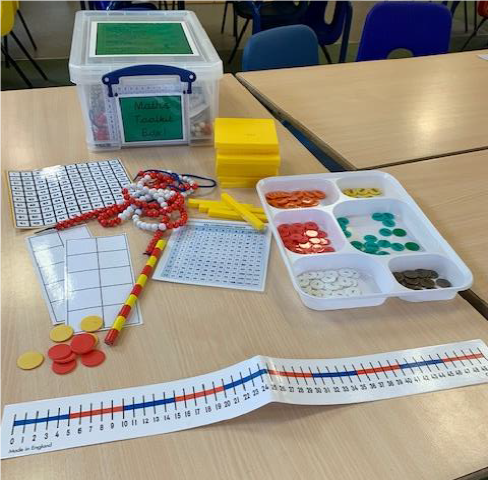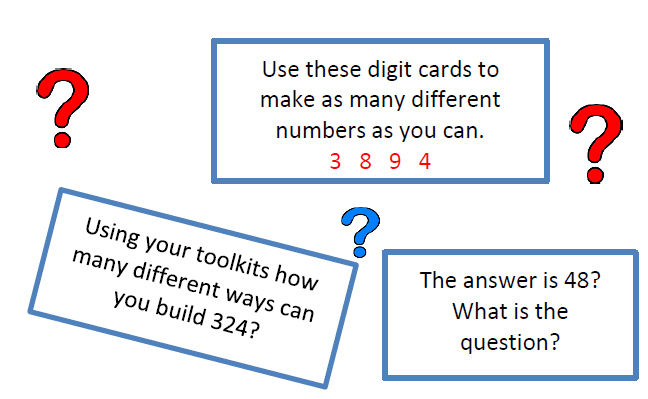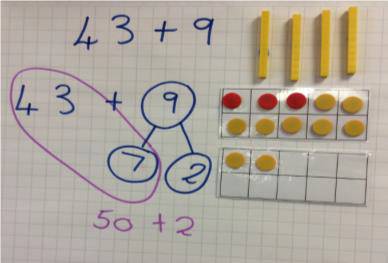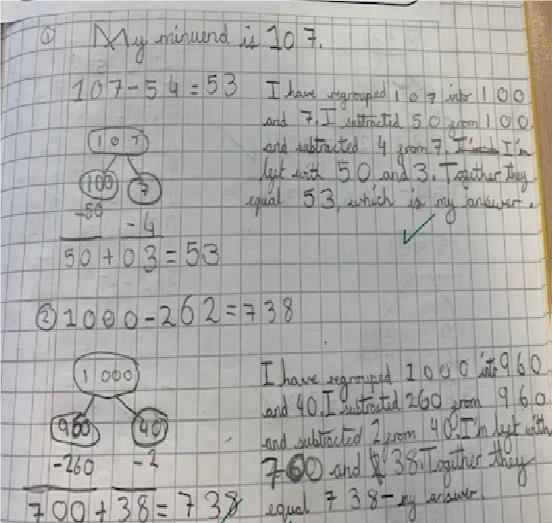Why mixed-age maths?
As a 1.5 form entry school, our journey to mixed age teaching in Maths began in September 2017. For a few years our Maths data had identified that the lower and prior middle attainers were not making the desired progress, therefore after carrying out lots of research on Maths sets verses mixed attainment/age teaching and after considering the aims of the National Curriculum, we decided to take the plunge and try mixed-age teaching. Since then we have never looked back!
Parent presentation
At the start of the year, we invited all of the parents to a presentation on why we were moving to mixed age maths as we predicted some parents may be apprehensive about the move away from streaming. The only concern voiced by a minority of parents was the possible negative impact on the highest attaining pupils. Here we presented them with the benefits of mixed-age maths verses streaming for pupils from all starting points, showing them the kinds of challenges that would be available to them. This engagement with our stakeholders was a key piece of work in order to get the parents to put their trust in what we were planning to do.
Phase 1
The first phase of mixed age maths teach ing was to introduce it to Key Stage 1 and Lower Key Stage 2. We sought support from the Herts for Learning Maths Team and the Teaching and Learning advisor spent time with each team, unpicking the first sequence of the HfL mixed-age ESSENTIALmaths planning and supporting teachers with a range activities and assessment opportunities.
ing was to introduce it to Key Stage 1 and Lower Key Stage 2. We sought support from the Herts for Learning Maths Team and the Teaching and Learning advisor spent time with each team, unpicking the first sequence of the HfL mixed-age ESSENTIALmaths planning and supporting teachers with a range activities and assessment opportunities.
In addition to this, we explored a range of maths resources to support the learning process. This in turn meant that each class was provided with five maths toolkit boxes with all of the key resources to support the teaching of the sequences.
Differentiation
Having two different year groups in one class meant that teachers needed to think carefully about differentiating the learning. Throughout the year, teachers explored many different teaching styles. When teaching the whole class, they would often provide the children with low threshold, high ceiling tasks from the HfL ESSENTIALmaths mixed-age planning. This meant that all of the children within the class could access the learning and it could be extended further through extension opportunities.
Independent learning
 Children during independent learning were provided with three challenges**. They were guided to select appropriate tasks and use their maths toolkit boxes to not only support them but to deepen and reason about their mathematical learning.
Children during independent learning were provided with three challenges**. They were guided to select appropriate tasks and use their maths toolkit boxes to not only support them but to deepen and reason about their mathematical learning.
This approach evolved further and through assessment for learning, the teachers would sometimes teach in smaller focused groups. This ensured that misconceptions were quickly addressed, children were provided with the relevant support and that pupils who needed challenging further were challenged.
Teaching strategies
One of the strategies we embedded as a school was the episodic approach, teachers would often start by teaching the whole class using the HfL Essentials mixed age planning and would then ‘peel off’ throughout the lesson, deepening the learning.
There were times at the beginning of the lesson that the current higher attaining learners would start on their challenge independently while the teacher taught and consolidated learning with the rest of the class, once these pupils had consolidated their learning the teacher would teach the higher attainers and extend their learning further.
As well as the teachers exploring the different teaching approaches, they also began to think about the seating arrangements within their classroom. During the input, the children were often taught in mixed attainment pairs, this encouraged the children to work collaboratively, using the toolkits and encouraged them to explain their reasoning.
Whilst sampling the pupils' books, the journey they were securing demonstrated excellent progress compared to starting points. They were using clear pictorial representations to demonstrate their understanding and their reasoning was much improved.
When speaking to the children, about their learning and the mixed-aged classes, they were extremely positive. They liked the different structures of the lessons, they liked being provided with the three tasks and they all felt that they were being challenged.

Impact
The impact of mixed-age teaching has been very positive. Over the course of the year, I had the opportunity to meet with teachers to find out how they were finding teaching in this way, I was able to observe lessons across the school, sample pupil’s work and meet with the children to find out how they found working in mixed-age classes.
Class teachers were extremely positive about the shift to mixed-age classes, they were enjoying using the HfL ESSENTIALmaths mixed-age planning and could see the benefits in mixed-age teaching. The lessons observed demonstrated that the children were working collaboratively and were developing their reasoning and problem solving skills together.
The children were more regularly seen to be working in mixed attainment pairs, where they were developing their understanding of a concept and reasoning together. This enhanced the children’s mathematical vocabulary and understanding, as well as further developing their ability to reason. The HfL ESSENTIALmaths speaking frames were excellent scaffolds to support with this. Teachers were also using a range of manipulatives to enhance their teaching and the children were using the maths toolkits to support and deepen their learning.
Our maths data also showed that the prior higher attaining pupils had not been disadvantaged.
Due to this we decided to implement mixed age maths into Year 5/6 at the beginning of September 2018.
Across the school all of our classes are now mixed-age and this is continuing to have a really positive impact for all of our children.

Where next?
Not only could the impact of mixed-age maths be seen within the teaching of lessons, books and when talking to the children, it was also reflected in the data.
Our Year 2 data for 2018, rose to 85% at ARE in comparison to the previous year, which was 80% and we had 38% of pupils assessed as working at greater depth in comparison to the previous year at 22%.
The data for the end of Years 3 and 4 also saw a rise in the amount of pupils at ARE and working at greater depth.
**These were set up to match year group expectations and as further deepening tasks.
Amanda Taylor Assistant Head, maths subject leader and Year 3/4 teacher at Eastbury Farm Primary School, Northwood.
ESSENTIALmaths mixed-age planning resources are available in the ESSENTIALMATHS subscription.



